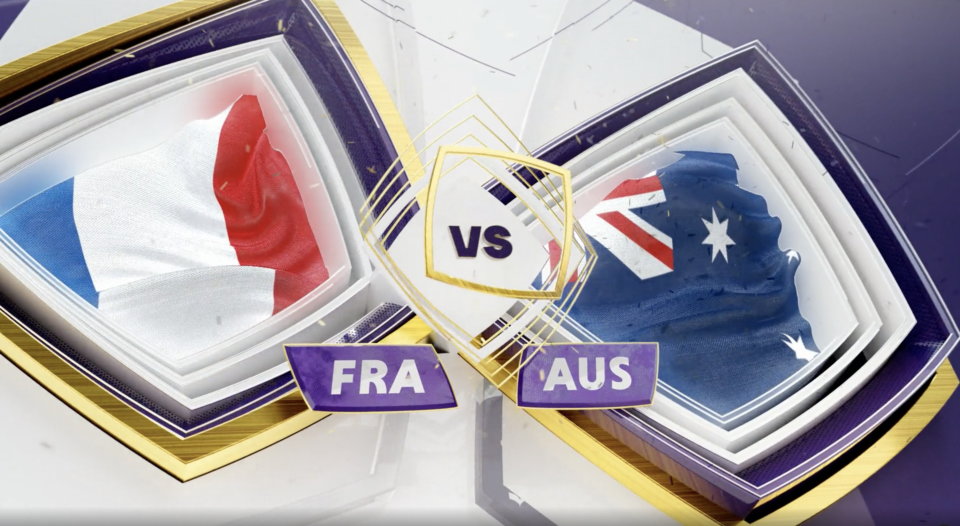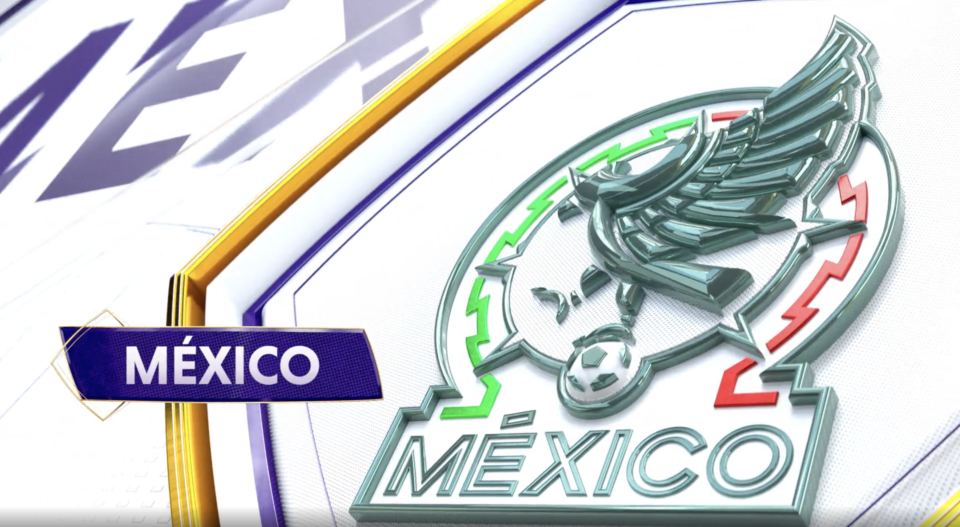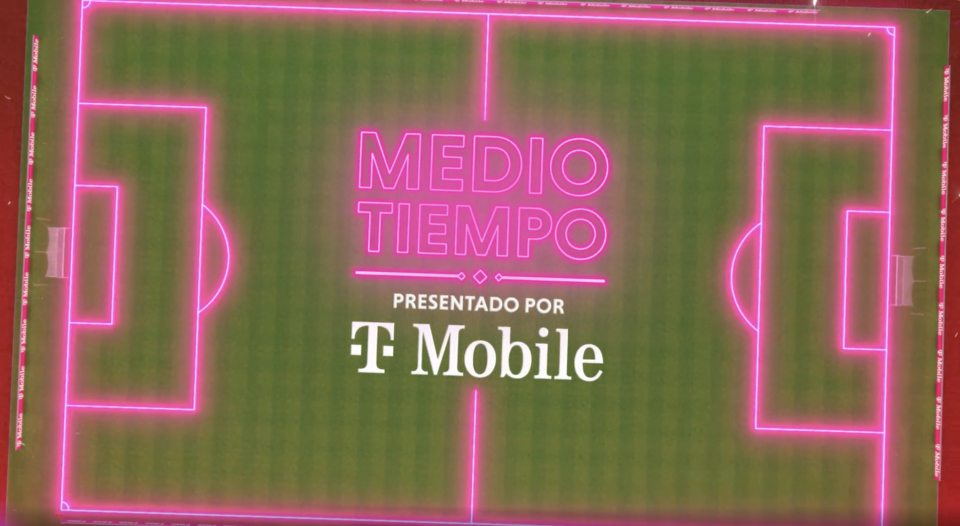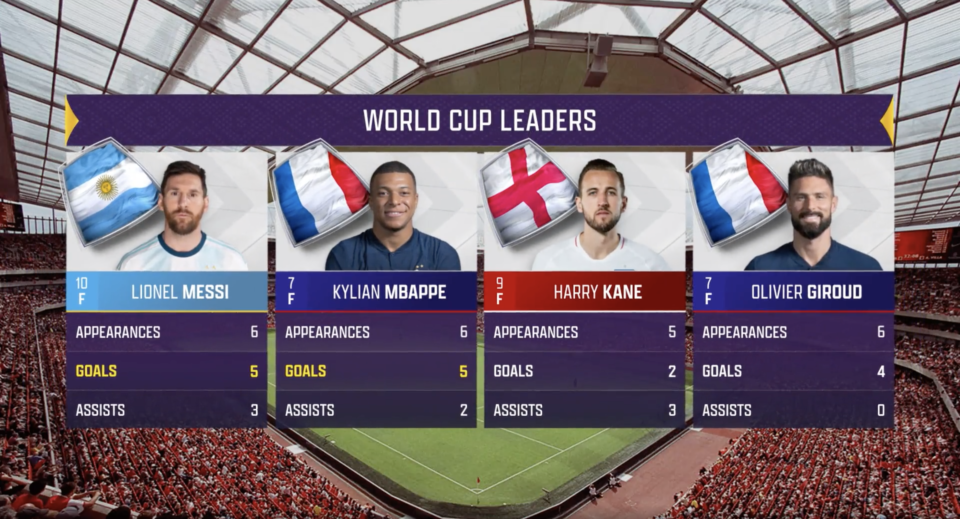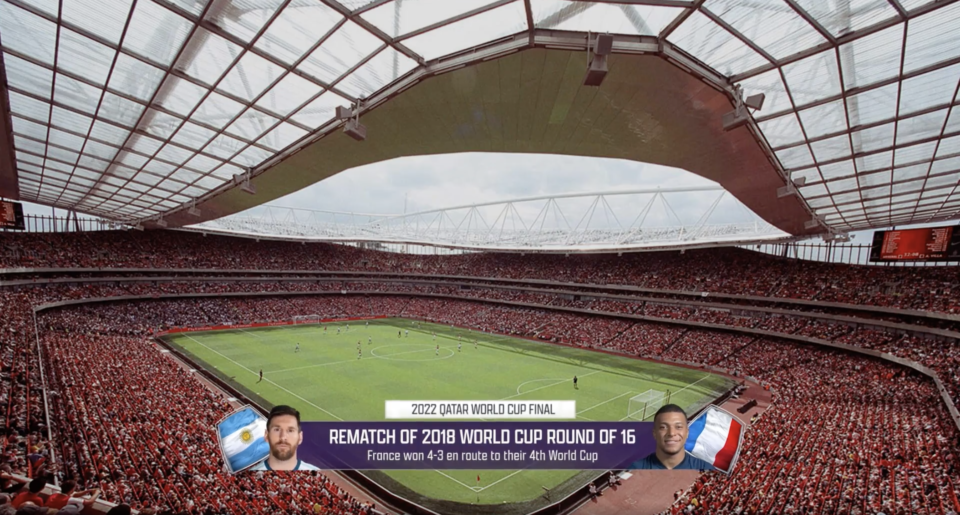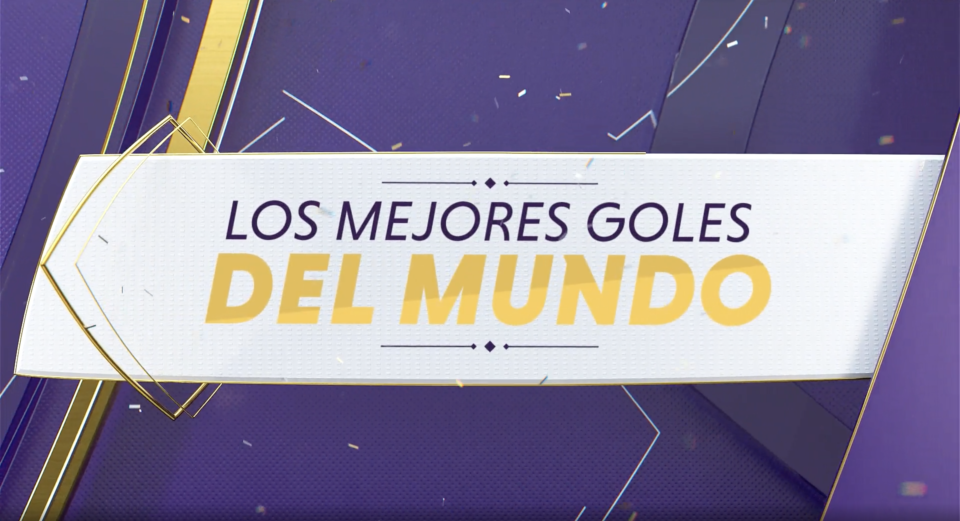FIFA World Cup 2022: How GameDay Creative Built Telemundo’s Eye-Popping Graphics Package
Customization and flexibility were key goals in the design
Story Highlights
Gameday Creative, a full-stack creative studio, has been developing on-air graphics packages for live coverage of sports, entertainment, esports, and other events for more than a decade. Though having worked on high-profile properties like Jeopardy!, Twitch Rivals’ Streamer Bowl, NBC’s Football Night in America, and MLB Network Showcase (debuting this spring), the studio made its biggest splash when it was enlisted to create Telemundo Deportes’ graphics package for the FIFA World Cup Qatar 2022.
“The graphic and insert package that Gameday Creative designed and developed for Telemundo’s FIFA World Cup presentation exceeded our expectations,” says Roberto Pardo, SVP, sports content, Telemundo Network. “It was instantly identifiable, clean, colorful, and dynamic. They are great partners and delivered a best-in-class visual identity worthy of an event like the FIFA World Cup.”
‘Celebration’: The Axis on Which the Package Spins
Gameday Creative had previously worked with Telemundo on its Rumbo Al Mundial (Road to the World Cup) graphics package, which was designed and executed in 2020 and debuted in 2021 leading up to the World Cup. It was Gameday’s first major collaboration with the Telemundo broadcast and sales team, and the Spanish-language network opted to bring the studio back for the World Cup.
Gameday Creative Executive Producer Scott Flato and his team were looking to capture the spirit, scale, and prestige of the World Cup while remaining authentic to Telemundo’s brand and audience. Studying the World Cup, they landed on a keyword to capture the energy of the tournament and the broadcast – “Celebration” – and proceed to create a package built on that idea.
“When a team scores,” says Flato, “and legendary Telemundo sportscaster Andrés Cantor screams ‘GOALLLLL’ — let’s face it, it’s always better to hear that goal call on Telemundo vs. anywhere else — the whole stadium ignites, living rooms and bars explode with excitement, and people all over the world go nuts in celebration. We wanted our graphics to capture that energy.”
The Creative Process: From Concept to Delivery
Telemundo’s initial conversations with Gameday started about 10 months before scheduled delivery of the insert package in October and the full-screen and TD elements in November. After getting the green light and a start date of May 2, Gameday and Telemundo agreed on a very detailed timeline, with “the space to explore, try things, fail and succeed creatively,” according to Flato. This also provided Telemundo with enough time to bring in the gigabytes of files Gameday would deliver and implement the content into the trucks and studios for a successful launch.
“We are used to working on much tighter deadlines,” he says. “We often joked with one another throughout the production that this felt like one of the few projects we’ve had with a realistic timeline, given the amount of graphics we needed to deliver. It felt refreshing.”
Flato’s team began, as is the case with most projects, with a research phase. This involved understanding the personality and intention of the Telemundo broadcast and knowing the audience, as well as what was important to the Telemundo team and the viewer watching at home. GameDay’s staff also studied graphics running on film, television, print, social media, live events, etc., to stay up to date on current trends and styles.“We studied the World Cup itself,” Flato explains, “its identity, its history, what makes it stand out as a truly special event vs. other sports tournaments. We looked at Qatar, the host country, and learned about their culture and history, their style, and the different locations [where] the matches would be held. Even the stadiums had their own design and architecture, which added a ton of detail and inspiration.”
After completing the research phase, Gameday Creative designed multiple creative directions, produced hundreds of style frames, explored techniques and technology, and narrowed in on a few graphics identities to be pitched to Telemundo. When “Celebration” was chosen as the design direction, the team undertook the massive task of bringing it to life through motion.For production and delivery, Gameday Creative deployed Maxon’s Cinema 4D software and Redshift 3D render pipeline, compositing and templating in Adobe After Effects.
“We needed to design our projects as ‘design systems,’” says Flato, “to create a visual identity that can inform the creation of various and future elements as well as provide toolkits that can quickly and efficiently create new graphics that follow that identity.”
The Insert Package: Massive Undertaking for a Massive Event
Crating an entirely new insert-graphics package is a massive lift under any circumstances, let alone for one of the biggest events on the planet. Insert packages typically are extremely robust and technically challenging, and meeting the challenge was key for Gameday’s Telemundo World Cup graphics package.
In addition, the insert system was to become Telemundo’s standard insert look beyond the World Cup, which meant that Gameday had to create a system that is customizable to satisfy the World Cup needs yet flexible to service Telemundo moving forward.“[Insert graphics] are some of the most-viewed and most-played graphics on a broadcast,” notes Flato, “so we wanted to make it a priority, which involved ensuring function and form. We created a system that used a visual separation of elements that we thought not only was a unique look versus other Insert looks but created the modular flexibility we wanted. We also incorporated some Z-depth motion theory, which gave the Insert its movement style.”
Gameday Creative worked closely with Telemundo’s in-house graphics team to ensure that the insert packages were integrated properly for playout via Chyron graphics systems during live broadcasts.
The AR Factor: Bringing Virtual Graphics Into the Fold
AR is becoming ubiquitous in sports broadcasting, and Telemundo’s World Cup coverage was no exception. The network tasked Gameday Creative with building an AR system that worked for both small-scale, in-studio elements and large-scale, in-stadium elements. Designed in Cinema 4D, the AR graphics system was ultimately powered by Unreal Engine.
“The design that best achieved this was removing any kind of base-plate graphic from the ground and instead using a floating design equipped with a strong, singular tangent that could scale down to fit in the studio as well as expand to fill an entire stadium,” says Flato. “Studio design has always been a huge passion of mine, and I personally love when a studio space comes to life.”
Looking Back: A Job Well Done – and Seen by Many
The response to the overall look of the package — from both Telemundo and the majority of fans watching the broadcast — was overwhelmingly positive. Telemundo’s coverage also exceeded expectations and saw massive viewership across all platforms with a Total Audience Delivery (TAD) of 2.58 million viewers across Telemundo, Universo, Peacock, and Telemundo streaming platforms, up 14% vs. the 2018 tournament (2.27 million).
“I cannot put into words how proud I am of the team at Gameday,” says Flato. “As our industry family knows, it requires a massive group of incredibly talented and passionate people to make packages like these possible. From artists to producers, directors, project managers and beyond, it takes time and hard work to get from beginning to end successfully. In addition, the team at Telemundo was once again an amazing creative partner. They conveyed their vision clearly and worked with us to achieve it — a true collaboration.”
He applauds Gameday’s artists for contributing their individual talent and creativity to the project, often stepping out of comfort zones and taking chances creatively. Gameday’s producers and project managers also kept the project on schedule, on budget, and trafficked thousands of deliverables, a feat Flato says can often be overlooked in the thick of a project.
“To lead this team,” he adds, “was an honor for me. If I had to sum up the experience in one word, I would simply say ‘outstanding.’”
